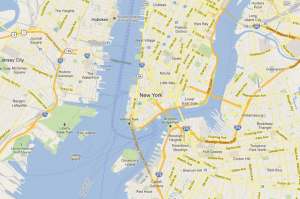
This chapter of Rettburg is especially unique in the sense that he discusses some of the more modern and advanced methods and technologies used to create and enhance electronic literature. The section of the chapter that interests me the most pertains to locative narratives and how the incorporation of data regarding our locations assists in the creation of narratives.
As stated by Rettburg:
“The majority of locative narrative projects share a common interest in the relationship of physical space and geographic location to the narrative and poetic dimensions of literature” (185).
The addition of the element of location can enhance the narrative of a work by giving the reader a sense of visualization to base their understanding of the work on. For instance, if a given work of electronic literature takes place throughout Portland, Oregon, the addition of a visual representation of where the story takes place on Google Maps adds to the overall narrative of the work. The incorporation of something such as Google Street View would also add a visual element to a work and would thus add another narrative layer to the work.
The fact that Google Maps is an open API that anyone has access to and may use for their project grants authors of electronic literature the ability to incorporate elements of location into their work. Mr. Beller’s Neighborhood for instance is a set of stories that are tagged with a location on Google Maps, and each story is located on different points on a Google Maps view of New York City. Being able to see on a map where each story happens to be pinned adds to the narrative and gives the reader an idea as to why each particular story is written as it is.